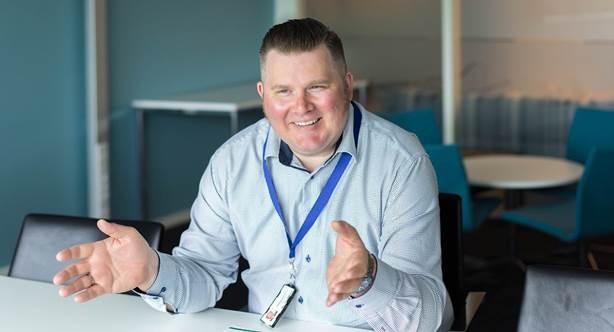These are indeed defining times for the industry. We sat down with eDrilling’s VP Product Management and Strategy, Morten Svendsen, to hear his views on one of those items often put forward to secure a bright future for us all – namely, digitalization.
Digitalization – hot or not?
Definitely hot. There is a wind of change blowing in the industry, and it has digitalization written all over it. For us in the software world, this is just a new name for something we have done all along, but we observe that the general awareness and acknowledgment of the value digitalization brings is at a whole new level among our customers and partners.
Is there a “recipe” for digitalization?
Not one – the shoe that fits one person pinches another. Some are putting their toes in, and others are doing the cannonball. Although there are variations as to how different companies are approaching it, they all have in common that this is now a board-level priority. Indeed, oil and gas CEOs are preaching “digitizing of the industry” as the only way forward.
We can also learn from history. When Hitec, our ancestor if you like, introduced cyber drilling, it was all focused on technology, and too little on people, work processes, and legacy workflows. Today, when we are working together with our next-door neighbor Statoil on “next generation well delivery,” which is one of their digitalization pillars, we have an all-encompassing approach.
Does the industry need “digitalization”?
Yes, and I speak for the drilling side of things. Whether you call it digitalization or something else, application and intelligent use of real time drilling data is a game-changer.
Many of the important workflows are still carried out with technologies that are at, or, I think, beyond end-of-life. Training on generic Drilling Simulators was introduced in the early 90s (by Hitec), and improving drilling decision-making by looking at “squiggly lines” in real time operations centers was all the rage as early as the turn of the century. There are huge savings to be made, as well as safety and efficiency gains, by putting these technologies in a museum, and move on.
A couple of years ago we introduced “training on your own well,” revolutionizing the impact on safety and efficiency. And, we are currently working with a number of E&P companies with software to help them get value out of their real-time centers and roles. A logical next step from that is to work right from the platform. The technology is already here; it’s rather legacy processes, workflows and business models holding back.
We have had ups and downs in this industry since forever, and we often fail to learn, and go back to the old ways as soon as the upswing occurs. Will it be different this time?
Well, we do not know for sure, but from what we see, companies are trying to make their cost reductions be sustainable. There’s no consensus this time around industry outlook or future oil price levels, and this uncertainty leads to focus on balancing cost and profitability in a way we have not seen before.
Finally, there is a lot of talk of the digital divide and the “have and have nots” in our industry. Is digitalization of our industry dependent on the new generation?
It should not be. There’s a lot of competence and experience in the current workforce you want to bring forward, and you want this knowledge and experience to trickle down to new generations of workers. Our job is simply to make our software as intuitive and easy-to-use as possible, and thus attractive and unequivocal to both old and young.
You do of course have laggards in this industry as everywhere else – people who insist everything was better before, and that resist any change. Even if we introduced cyber drilling in the early 90s, a number of wells are still done in a mechanical and analog fashion. Today, while some are reorganizing themselves around this new digital reality, others are simply changing the name of an existing department.
However, there are strong signs though that this time around the change will come around much quicker – there are simply too much to gain on safety, efficiency, and cost of drilling operations by going next generation digital and move to automated monitoring and real team optimization.
Toni was previously a Director and President at Merrick, and Chairman of the Board of Croxus, the Consumer Field Director in Microsoft Corporation, the COO of Microsoft Norway, and General Manager Consumer & Online Microsoft Norway. Fadnes holds a Master in Management Science from the University of Manchester.
Oil and gas operations are commonly found in remote locations far from company headquarters. Now, it's possible to monitor pump operations, collate and analyze seismic data, and track employees around the world from almost anywhere. Whether employees are in the office or in the field, the internet and related applications enable a greater multidirectional flow of information – and control – than ever before.





